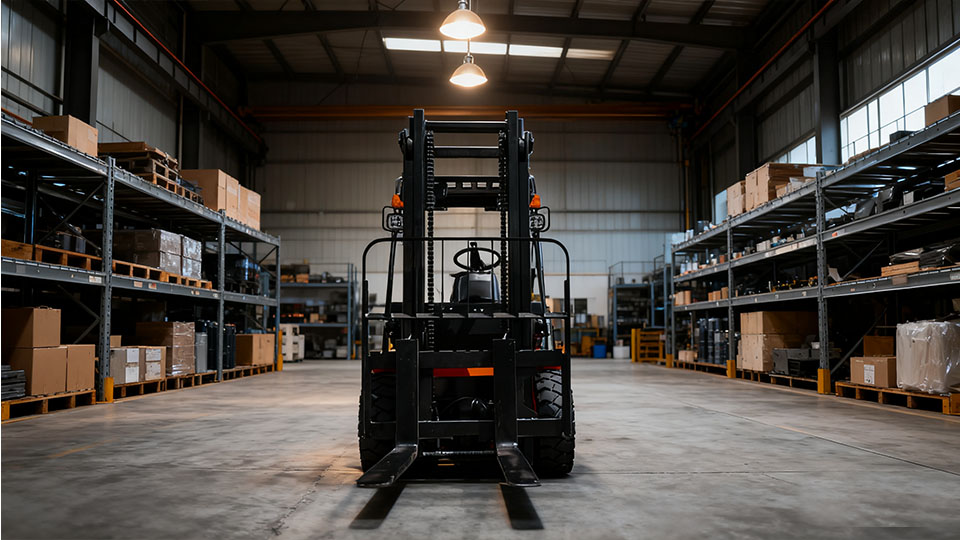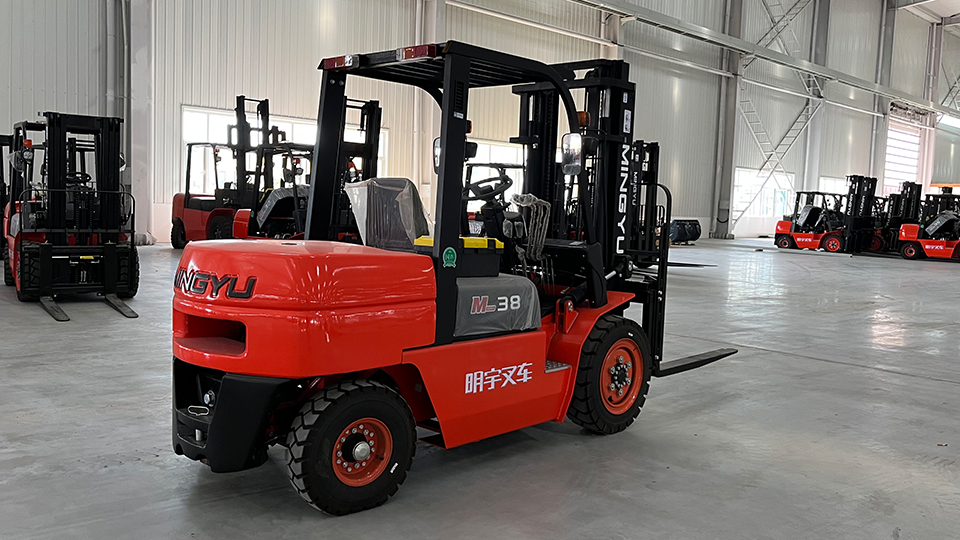
The counterbalanced forklift, a ubiquitous machine in modern material handling, operates on surprisingly simple yet profoundly important principles of physics. At the core of its design and safe operation lies a singular, critical concept: the fulcrum point. While operators often focus on load capacity and lift height, a complete technical understanding of the fulcrum point—and its relationship with the center of gravity (CG) and the stability triangle—is paramount for preventing catastrophic tip-overs. This article delves into the technical definition, location, and mechanical implications of the forklift’s fulcrum, providing a comprehensive framework for safe load handling.
1. The Fulcrum Point Defined: A Second-Class Lever
To a mechanical engineer, a counterbalanced forklift is a sophisticated example of a second-class lever system. In a classic lever, there are three components: the effort force, the resistance force (load), and the fulcrum (pivot point). In the context of a forklift:
The Load (Resistance): The weight of the object being lifted, plus the weight of the mast assembly and the vertical face of the forks. This force acts downward at the load center.
The Effort (Counterbalance): The weight of the forklift chassis, engine, and, most importantly, the massive counterweight block at the rear. This combined weight acts downward at the forklift's unloaded center of gravity.
The Fulcrum Point: The fixed pivot point around which the two opposing forces of the load and the counterbalance achieve equilibrium.
The technical location of the fulcrum point on a standard counterbalanced forklift is the center of the front axle (or, more precisely, the axis of the front wheels). This is the pivot where the entire system balances in the longitudinal (forward/backward) direction. The front axle effectively acts as a hinge between the combined weight of the machine and the weight of the lifted load.

2. The Delicate Balance: Load Moment and Maximum Capacity
The safe operation of a forklift is not simply about whether the counterweight is heavier than the load; it is about the load moment. A moment, or torque, is the rotational force created by a weight acting at a distance from a pivot point (the fulcrum).
The principle of equilibrium dictates that the rotational force trying to tip the forklift forward must be countered by an equal or greater rotational force trying to tip it backward.
Example: A 5,000 lb. forklift with a 24-inch rated L.C. is used to lift a load with a 36-inch actual
The safe lifting capacity is immediately reduced by over 1,600 lbs. simply because the load’s center of gravity moved 12 inches farther from the fulcrum point.
4. The Stability Triangle: The Fulcrum in a Three-Dimensional Context
While the front axle acts as the fulcrum for longitudinal stability, a forklift's overall stability is governed by the Stability Triangle. This imaginary triangle, first introduced by the Industrial Truck Association (ITA), provides a three-dimensional model for safe operation.
The three points of the stability triangle are:
The center of the front axle (the longitudinal fulcrum point).
The center of the rear axle's pivot point (which allows for steering motion).
The combined center of gravity (C.G.) of the truck and its load.
For a forklift to remain stable—both longitudinally (forward/backward) and laterally (side-to-side)—the combined C.G. of the truck and the load must at all times remain within the perimeter of this triangle.
The Fulcrum's Role in C.G. Shift:
When lifting a load: The combined C.G. shifts forward, moving closer to the fulcrum point (the front axle). As the C.G. nears the front boundary, the risk of a forward tip-over increases exponentially.
When elevating a load: Raising the load shifts the combined C.G. upward and forward, further compromising stability and reducing the margin for error within the triangle.
When turning: Centrifugal force acts on the combined C.G., attempting to pull it toward the outside of the turn, potentially pushing it outside the lateral boundary of the stability triangle and causing a side tip-over.

5. Conclusion for the Material Handling Professional
The fulcrum point of a forklift, positioned at the front axle, is the single most important fixed pivot in the engineering mechanics of the machine. It is the core around which the opposing moments of the counterweight and the lifted load achieve their necessary equilibrium. Technical competence in forklift operation demands more than just rote adherence to capacity limits; it requires a deep, quantitative understanding of the fulcrum's role in the Overturning Moment and its relationship to the C.G. shift within the stability triangle. By keeping loads as close as possible to the carriage—thereby minimizing the load center distance from the fulcrum—operators maintain the maximum stabilizing moment and ensure the highest possible safety factor, preventing the single most dangerous failure mode in material handling: the tip-over.
The combined center of gravity of the forklift and its load must always stay within the imaginary boundary of the stability triangle to prevent a tip-over, as explained in this video on the importance of the Forklift Stability Triangle.
Name: selena
Mobile:+86-13176910558
Tel:+86-0535-2090977
Whatsapp:8613181602336
Email:vip@mingyuforklift.com
Add:Xiaqiu Town, Laizhou, Yantai City, Shandong Province, China